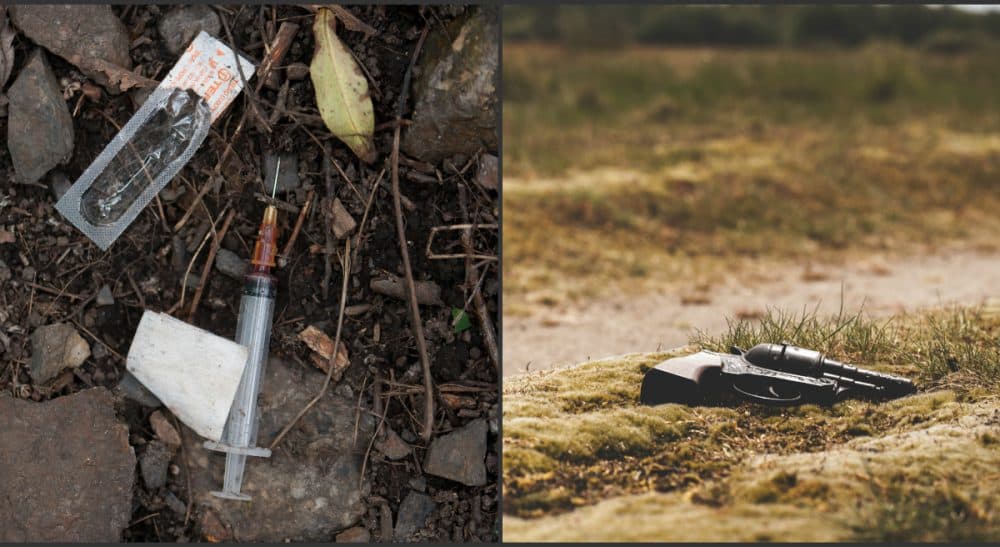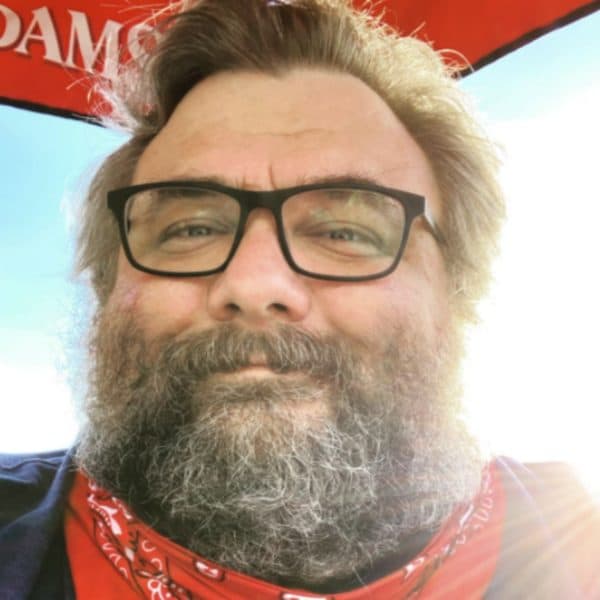Advertisement
Opioids And Guns: Does The Race Of Their Victims Drive How We Combat Them?

In 2014, the United States experienced a wide-scale tragedy: 28,647 deaths from opioid drug overdoses. This translates into roughly 8.6 deaths per 100,000 Americans, according to 2010 census figures. In 2013, the last year for which year-end data is available, 33,636 Americans died from gunshot wounds, or approximately 10.6 per 100,000. One of these groups has seen a comprehensive government response aimed at reducing access to the product that causes death. The other has seen a government actively obstructing similar efforts.
"We had a significant discussion for quite a period of time in the Republican conference today on the opioid-heroin epidemic that's sweeping the country," Senate Majority Leader Mitch McConnell told reporters in January. Following bipartisan testimony from New Hampshire Sens. Kelly Ayotte and Jeanne Shaheen, McConnell added that he hoped legislation could be enacted to address this “epidemic” by the end of the year. In March, Minority Leader Harry Reid threatened to pull Democratic support for a bill that would target the opioid crisis unless Republicans added another $600 million in funding.
One of these groups has seen a comprehensive government response aimed at reducing access to the product that causes death. The other has seen a government actively obstructing similar efforts.
On the campaign trail, presidential candidates of both parties addressed the opioid epidemic. Carly Fiorina, Donald Trump, Chris Christie and Jeb Bush shared how opioid addiction had touched their lives. Bernie Sanders called for “radical change” while taking our health care system to task, and Hillary Clinton proposed a robust $10 billion dollar plan to combat addiction, which works out to roughly $349,076.69 per opioid death in 2014.
Here in Massachusetts, Gov. Charlie Baker recently signed a law limiting initial adult and all pediatric opiate prescriptions to a seven-day supply; changing the way pain control is taught in medical schools; screening every public school student to determine who may be at risk of addiction; mandating mental health evaluations of every emergency room opioid overdose; and including opioid education in driver’s education classes. It’s a substantial bill, with a litany of new requirements for those taking legally prescribed and obtained medicine and those manufacturing, prescribing and selling those drugs.
And then there’s guns.
In 2013, the same year those 33,636 Americans died because guns did what they are designed to do, McConnell sent out a fundraising email that read, in part,
“You and I are literally surrounded. The gun-grabbers in the Senate are about to launch an all-out-assault on the Second Amendment. On your rights. On your freedom... The gun grabbers are in full battle mode.”
Even then-Majority Leader Reid did not press particularly hard on a four-point proposal by President Obama to curtail gun violence in the wake of the massacre of 20 6- and 7-year old children and six of their teachers at Sandy Hook Elementary School. “I’m not going to try to put something on the floor that won’t succeed,” Reid said. “I think the worst of all worlds would be to bring something to the floor and it dies there.”
On the campaign trail, Trump has called for arming teachers in classrooms. Sen. Ted Cruz has claimed, wrongly, “If you look at the jurisdictions that have really strict gun control laws, they consistently have among the highest crime rates.” John Kasich touts his signing of a bill that reduced by one-third the number of training hours needed to obtain a concealed-carry license in Ohio. And despite a 2013 Presidential Executive Order directing the Centers for Disease Control and Prevention to use their funding to study firearms and their role in violence, the CDC has not done so, as Congress is blocking funding for this research.
...are we wrong to ask whether, if the most affected populations were reversed, one or the other crisis would be getting different attention?
Gov. Baker, a self-declared fan of the Second Amendment, has said he does not support a federal assault weapons ban. Nor does he believe that limiting gun purchases to one per month is a solution. All of this in the state with the fewest gun deaths per capita, despite sharing a porous border with much-less-regulated New Hampshire.
Two epidemics. Thousands of deaths. So why aren't our leaders attacking these crises with equal urgency, funding and legislation? Consider this data point: Guns claim a disproportionately high number of black lives, and opioids claim a disproportionately high number of white lives. While it is too simple to cite racism as the root of the disparity in treatment of these two scourges, are we wrong to ask whether, if the most affected populations were reversed, one or the other crisis would be getting different attention?
In 2013, for example, there were 17.8 gun deaths per 100,000 blacks versus 9.0 per 100,000 whites. In that same year, 17.6 white opioid users per 100,000 lost their lives, while 9.7 per 100,000 blacks did. Those stats are near perfect reverse images of each other.
So why are opioids, which arguably could be called a white problem based on the numbers, identified as a “disease” and an “epidemic” that merits social support and health care, while guns, which claim more black lives, are met with law enforcement and incarceration?
This difference of language and perception, this divide based on how we view the victims of a product made and sold in this country must be faced.
Thirty-thousand-plus deaths is an epidemic for all of us, or it’s an epidemic for none. It’s that simple.
